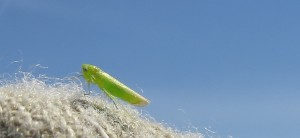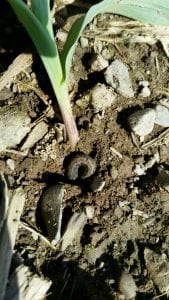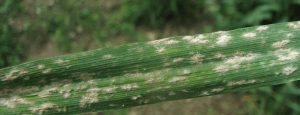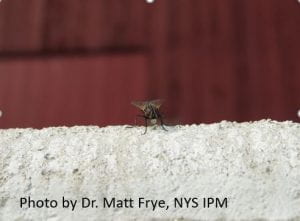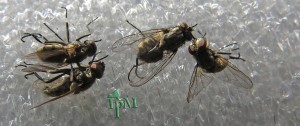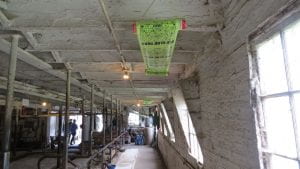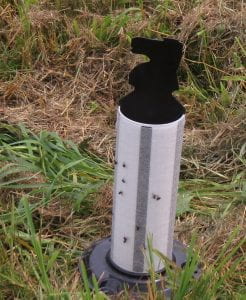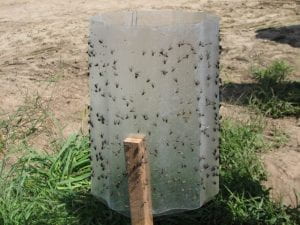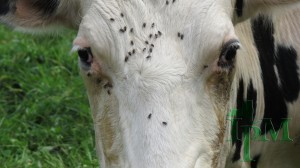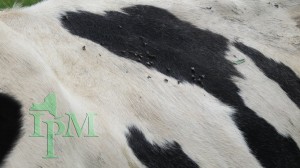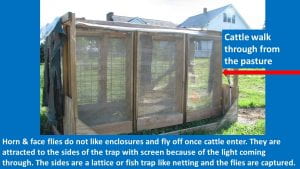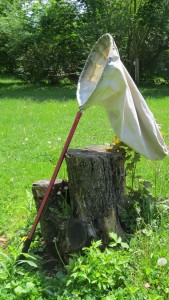Volume 18, Number 7
Contents
Cornell University Willsboro Research Farm Open House
Willsboro, NY – June 12, 2019
The Cornell University Willsboro Research Farm will hold an open house on Wednesday, July 10 from 1:30pm to 4:00pm. A tour of the facilities and research plots will leave the main office (48 Sayward Lane, Willsboro) at 2:00pm. Light refreshments will be provided.
Research topics featured at this year’s open house include industrial hemp trials, insect exclusion netting for cucumbers, corn silage variety evaluations, soil health plots, cover crops, warm season forage options, juneberry nursery and production trials, Aronia variety plantings, honeyberry variety trial, reduced tillage demonstration plots, and grain plots of winter triticale, winter rye, and winter barley.
In 1982 E. Vreeland Baker, a Willsboro farmer and entrepreneur, donated his 352 acre farm to Cornell University for agricultural research and demonstration. The facility serves to connect Cornell faculty in Ithaca with the challenges and issues facing North Country farmers. Willsboro Research Farm is part of the Cornell University Agricultural Experiment Station.
This event is free and open to the public. For more information call 518-963-7492.
View from the Field
There are reports of potato leafhopper (PLH) population over threshold in alfalfa. These are all adult PLHs and somewhat uncommon to be over threshold without PLH nymphs. The video link (potato leafhopper scouting in alfalfa) or the article below on how do scout for potato leafhopper in alfalfa.
Go look for at your cornfields for black cutworm damage. There have been several reports of fields over threshold. The threshold is if 5% of plants have been damaged or cut off at the base. There are also mixed sizes of larvae in the fields. Large larvae (1.25 inches) will pupate soon and not be a problem but small ones will go through more molts (instars) and continue to feed.
Common (AKA “True”) armyworm has been found in small grains. We do monitor for the moths each spring the levels have been low unit this week. There has been an increase in the moths caught in pheromone traps across NYS. Keep an eye out for this pest in small grains, corn or grass forage fields.
Some wheat fields are infested at high levels with powdery mildew. Some of these fields are being sprayed. There are also reports of leaf rust and septoria leaf spot.
Some are reporting that alfalfa weevil is infesting alfalfa regrowth and cereal leaf beetle in small grains.
Weather Outlook – June 13, 2019
Jessica Spaccio
NOAA Northeast Regional Climate Center, Cornell University
Last week temperatures ranged within 2 degrees of normal. Precipitation has ranged from half an inch to over 2 inches. Base 50 growing degree-days ranged from 40 to 120.
Unsettled conditions for most of the week with a few dry periods.
Today will be a rainy day with afternoon thunderstorms possible and temperatures will be cooler, in the mid 50s to mid 60s. Overnight lows will be in the upper 40s to low 50s with dry conditions.
Friday will also be cool with temperatures in the 50s to mid 60 for most areas with scattered showers likely, while western NY will have some sun and temperatures warming into the 70s. There will be gusty conditions with gusts of 20-30mph. Overnight temperatures will be in the upper 40s to low 50s with dry conditions.
Saturday temperatures will be in the low to mid 70s with dry conditions for most of the day before rain returns later in the day. Overnight temperatures will be in the mid 50s to low 60s.
Sunday highs will be in the low to mid 70s with showers and thunderstorms possible. Overnight temperatures will be in the mid 50s to low 60s.
Monday temperatures will be in the 70s with a chance of showers. Overnight temperatures will be in the mid 50s to low 60s.
Tuesday highs will be in the 70s with a chance of showers. Overnight temperatures will be in the mid 50s to low 60s.
Wednesday highs will be in the 70s with a chance of showers. Overnight temperatures will be in the mid 50s to low 60s.
The seven-day precipitation amounts will range from ½” to 3” .
The 8-14 day outlook (June 20-26) slightly favors above-normal temperatures for a majority of the state. Above-normal precipitation is slightly favored for the state.
National Weather Service watch/warnings map
Dairy Fly IPM Demonstrations
Ken Wise, NYS IPM
We have set up two dairy fly IPM summer-long demonstrations. The demonstrations are in Essex and Dutchess Counties. Along with Jennifer Fimbel (Dutchess County Cornell Extension Educator) and Carly Summers (Essex County Cornell Extension Educator), we have set up two summer long demonstration with Shunpike Dairy and North Country Creamery Dairy.
There are several species of flies that cause cattle problems and we break them into two categories: barn flies and pasture flies. In the barn we have stable flies (biting) and house flies (non-biting), and on pasture we have stable flies (biting), horn flies (biting), face flies (non-biting), horse flies (biting) and deer flies (biting).
Barn Flies: Both house and stable flies reproduce and develop in moist, rotting organic matter. This includes moist hay, straw, manure, feed or any rotting material in contact with the ground (soil or concrete). Stable flies need to take blood meals to reproduce. These flies like to bite the legs of the animals. Houseflies do not bite but can occur at high numbers. They annoy the animals and can transmit various diseases.
Keeping areas around the barn clear of this organic matter reduces barn fly issues dramatically. BUT…Even while keeping barns clean, these flies can still become problematic as the summer progresses.
The use of biological control can help keep populations lower if you start in the early summer. Releasing specific parasitoids around the barns works like smart bombs by laying eggs inside of the pupa of stable and house flies. They hatch and will eat the pupa before it can an adult fly. There are many types of fly traps that can be employed to control barn flies. You can purchase parasitoids for weekly releases from IPM Labs .
We have set up several fly traps for demonstration to aid in controlling these flies in or around the barns to monitor fly populations and efficacy of the various traps for the summer.
PRO SERIES SPIDERWEB™ FLY GLUE TRAP (AKA Giant Glue Trap) (house flies and some possible stable flies)
Knight Stick (stable flies are attracted to a blue spectrum of light that is reflected)
Olsen Biting Fly Trap (stable flies are attracted to a blue spectrum of light that is reflected)
Insecticides can be used in the barn if threshold levels have been met or exceeded. Place 3 by 5-inch spot cards in different areas of the barn where flies congregate. When houseflies rest they regurgitate their food and leave a spot on the wall, or in this case the card. If a card receives 100 spots per card per week, it has reached the action threshold. Make every attempt to find where the flies are breeding and reproducing and eliminate the moist organic matter. If there is still a problem, and only as a last resort, an insecticide can be used. (Make sure you read and follow the insecticide label before use)
Pasture Flies: While stable flies breed in moist organic matter horn and face flies reproduce in fresh cow pats. Within a minute or so, after a cow defecates, the flies lay eggs in the pat. Horn flies live 90 percent of the time on cattle and need blood to reproduce. Each fly can take 20 blood meals a day. That is a lot of biting on the animals. Face flies feed on secretions from the animal around the eyes and nose. They will also feed on a wound or cut. Face flies also transmit pink eye and infect animals with a nematode eye worm (Thelasia sp.).
Horn flies can be controlled with a walk through trap (Bruce Trap) or a Cow Vac. A second method is to drag a light harrow to spread out the manure pat and make it thin and dry out. This will kill the fly maggots in the manure pat.
Walk through trap (Bruce Trap)
The flies can also be controlled with insecticides if certain thresholds have been met. The threshold for face fly is an average of 10 flies per face across the herd and horn fly is an average of 50 per side of the animal. Note that horn flies are ½ the size of the house fly, and feed on the back, side or belly of the cattle. The threshold for stable flies in the barn or on pasture is an average of 10 flies per 4 legs. You will need to monitor about 15 animals in the herd to determine thresholds.
There are also horse and deer flies (both biting flies) that can feed on cattle. While they occur to a lesser degree that other cattle flies they do take blood meals and are very painful. They reproduce in wet areas in and around forests. They will land on the cattle, take blood and leave in seconds. This is why insecticides do not work on these two biting flies, because there is not enough exposure to the insecticide. We set up two traps that catch stable, horse and deer flies on each farm.
We will host field meetings in association with the demonstrations during which we will demonstrate and discuss IPM for flies on cattle and general pasture management. Meeting dates will be posted soon.
Time to Scout for Potato Leafhopper in Alfalfa!
Ken Wise, NYS IPM
Scouting alfalfa fields is the key to early detection of potato leafhopper infestations. Use a 15-inch diameter sweep net to determine the potential risk a potato leafhopper infestation may pose to your alfalfa.
Scouting for potato leafhopper starts after the first cutting of alfalfa (about the first part of June) till the first fall frost. You will want to use a potato leafhopper sequential sampling plan to determine if an infestation requires management or not. The first thing to do is determine the height of your alfalfa. Smaller plants are more vulnerable to potato leafhopper; thus there are different action thresholds for different heights of alfalfa. The second thing you will need to know is how to sample for potato leafhopper. A sample consists of a set of 10 sweeps of the net. A sweep is one pass in front of you as you walk through the alfalfa. The return swing is counted as another sweep. Sequential sampling reduces the time spent in each field and tells you whether to treat (management action) or not treat (no management action). Sequential sampling is particularly helpful in minimizing time required to make a management decision in situations where PLH populations are very high or very low. Use the following chart to determine potato leafhopper infestation levels.
Write down the number of potato leafhoppers for each sample taken on the card. Add each sample to the next, keeping a running total of potato leafhoppers. You will need to take at least 3 samples using the sequential sampling method. On the sequential sampling card “N” is defined as no treatment (no management) needed at this time and “T” is defined as treatment (management) needed within in a week. If the sample is smaller than the “N” number stop and scout 7 days later. If the number of leafhoppers is larger than the “T” number then management action needs to be taken within a week. If the number of potato leafhoppers fall between “N” and “T” then continue and take the next sample till a decision can be determined. A guide with a printable version of the sequential sampling chart can be found at: http://www.nysipm.cornell.edu/publications/plh.pdf
Black Cutworm Captures
True Armyworm Moth Captures
New York Field Crop Pest Degree-Day Accumulations for selected locations
(June 14, 2019)
Alfalfa Weevil Growing Degree Days Development Stages
Growing degree days for peak (50%) Occurrence of Alfalfa Weevil growth stage:
| Stage |
Degree Days (Base 48) |
| Egg | 280 |
| Instar 1 | 351 |
| Instar 2 | 395 |
| Instar3 | 470 |
| Instar 4 | 550 |
| Cocooning | 600 |
| Pupa | 725 |
| Adult Emergence | 815 |
(Note: for alfalfa weevil predictions use Base Temp of 48F)
Black Cutworm Degree Day Model
Degree Days Stage Feeding Activity
0 Moth Capture Egg Laying
90 Eggs Hatch
91-311 1st to 3rd Instar Leaf Feeding
312-364 4th Instar Cutting Begins
365-430 5th Instar Cutting Begins
431-640 6th Instar Cutting Slows
641-989 Pupa No feeding
(Note: for black cutworm predictions use Base Temp of 50F)
Source: University of Minnesota Black Cutworm Trapping Network
Clipboard Checklist
Keith Waldron, NYS IPM
General
*Walk fields to check general field condition, weed issues
*Watch for crop maturity, stand assessments, weed escapes, nutrient deficiencies, lodging issues
Alfalfa:
*Evaluate established legume stands for approximate days until harvest
*Monitor potato leafhopper, foliar, systemic and crown rot diseases.
*Monitor new seedings for potato leafhopper, pythium blight, phytopthora root rot.
Small Grains:
*Monitor small grains for signs of Fusarium Head Blight, foliar diseases
*Monitor grain fields for growth stage, disease issues, grain maturity, harvest timing
*Record diseases present, location and types of weed escapes
Corn:
*Monitor for mid-season corn pests including European corn borer, corn rootworm, western bean cutworm, slugs, foliar diseases such as northern corn leaf blight and gray leaf spot, weed issues, nutrient deficiencies, vertebrate damage.
Soybeans:
*Monitor for crop growth stage, soybean aphid, defoliators, foliar diseases, white mold, weed issues, vertebrate damage
Pastures:
*Check water sources, mend fences as needed.
*Check crop growth, clip pastures between grazing as needed
*Monitor for invasive species, plants harmful to livestock
*Review/Plan rotations
Equipment:
*Carry appropriate/necessary NYS DEC and EPA documents as needed: (pesticide applicators license, pesticide labels, MSDS sheets, etc.)
Storage:
* Check stored grain bins for temperature, moisture and signs of mold and insects. Aerate, core, transfer grain or treat as necessary
* Clean and disinfect empty storage bins in preparation for grain harvest
*Check forage allocation and anticipate feed program adjustments as forages from previous year are used up
*Mow around storage bins and facility to minimize pest hiding places
Dairy Cattle Barn Fly Management:
*Monitor animals and barn area for house fly, stable fly and other pest management needs including presence of rodents and birds.
*Check facilities for favorable fly breeding conditions: (organic matter + moisture): leaks in watering systems, roof gutters for leaks and potential overspill, drainage,
*Sanitation, sanitation, sanitation – clean animal resting areas, feed troughs, minimize source of moist organic matter i.e. fly breeding areas in barn and in adjacent animal loafing yard
* Continue fly monitoring: install “3X5″ index card fly speck monitoring cards throughout barn
*Use, replenish, replace fly management materials: sticky fly tapes/ribbons, insecticide baits, natural enemies (parasitoids), fly population monitoring (3 x 5) spot cards
*Consider purchase and release of Muscidifurax raptor and/or M. raptorellus natural enemies of house and stable fly pupae.
Dairy Cattle on Pasture:
*Monitor animals for presence of face flies, horn flies and stable flies. Action guidelines: face flies (average 10 per animal face), horn flies (average 50 / dairy per animal side, 200 / beef cattle per animal side), stable flies average 10 per animal (all four legs)
*Check feed bunk / water source locations for signs of stable fly breeding (moist undisturbed organic matter – spilled feed, round bales, etc.), minimize source of moist organic matter i.e. fly breeding areas in barn and in adjacent animal exercise yard.
*Check pasture for forage quality / quantity, rotate as appropriate
*Check pasture for vegetation poisonous to livestock
*Consider use of pasture fly traps to help reduce deer, horse and stable fly populations


